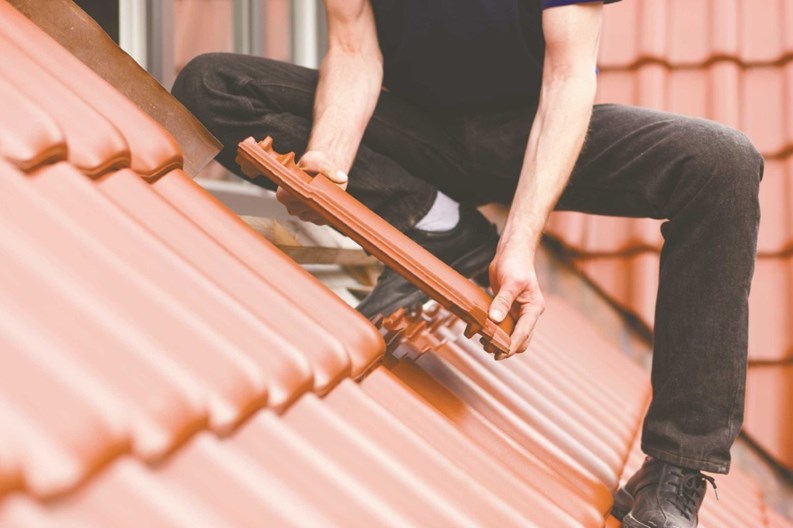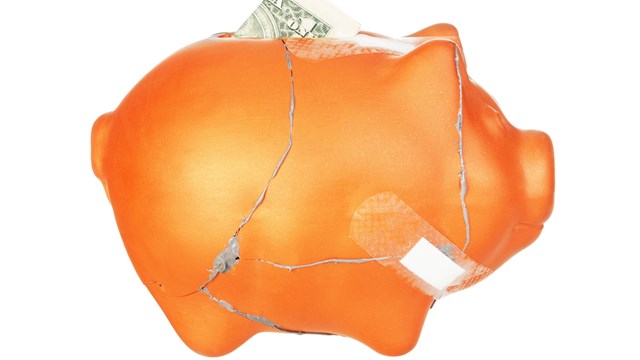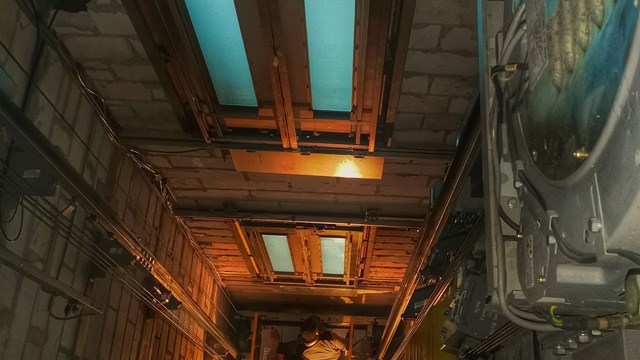After the four walls of a given structure, the roof is sometimes referred to as the “fifth plane”—and just like the walls that hold it up, the roof is an all-important structure that can make or break a building’s performance. Florida’s tropical climate, particularly its long rainy season and frequent storms, often exacerbates trouble spots. If not properly maintained, even a minor roof problem can lead to costly repairs.
Michael Kuzelka, president and CEO of FFR [Final Flat Roof] Global Inc. in West Palm Beach says that modified bitumen is the most common type of roof in South Florida. “It’s basically from an older system that’s still is use,” he says. “It’s the same material that shingles are made out of. It’s rolled asphalt that’s put down with heat and flame. Everyone refers to it as the modified bit.”
According to experts, the modified bitumen is an evolution of asphalt roofing. It’s made from asphalt and a variety of modifiers and solvents. There are several ways of connecting pieces of this material. In a heat application process, the seams are heated to melt the asphalt together and create a seal. There is also a cold applied adhesive application process, and some self-adhesive forms of this system. This material is also referred to as APP or SBS.
“There are many types of roofs in South Florida,” adds Kuzelka, “You have TPO [Thermoplastic Olefin or Polyolefin] which is a thermal plastic, there’s PVC [Polyvinyl Chloride] which is also a plastic, PDM [Propylene Diene Monomer] which is a stretched rubber and then you have specialty products out there like the K1 product which isn’t a roof system, it’s a restoration product for roof systems. The unfortunate thing is that they all have the same types of problems.”
Other Surfaces and Common Problems
In addition to a flat roof, other types of roofs common to South Florida’s wind and rain-driven climate are pitched roofs, which typically will use asphalt or wood shake shingles, tile, slate, steel, metal, copper or aluminum. A metal roof in Florida will give your home the most protection of any roof type. New shingle roofs are rated as high as 130 mph but metal roofs, experts say, can sustain wind gusts up to 200 mph. These shingles are heavier than the 3-tab shingles that are put on most homes.
Metal roofing allows for great durability and maximum efficiency. When a metal roof is installed on your home or commercial property, you will most often see a considerable drop in your heating and cooling energy costs. Experts estimate that metal roofs can have a lifespan of up to 50 years, which goes beyond the typical lifespan of other roofs.
Clay tile is another common South Florida roof type suitable for a variety of home styles. These tiles last a long time and are often outlive the home itself. They’re invulnerable to fire, rot, insects, mold and algae. Their only downfalls are their weight and their cost. A clay tile roof can be so heavy that it requires additional support for the roof. The price, while initially quite large, can easily be justified by the expected lifespan of the roof.
While the majority of roofs might be flat throughout Florida they are constructed by different companies, which results in varied states of performance so it’s best to do your homework and always check references while searching for a roofing company.
Industry experts agree that there are common problems with almost every flat roof and they usually occur around the drains, pitch boxes, flashing and electrical piping.
But South Florida with its tropical climate and rainy season that runs from June through September, as well as Florida being the most tornado prone state in the country can lead to unique roof problems.
“Leaks are a major problem for roofs in South Florida but it’s really the sun,” says Gigi Calderon, a manager at Tiger Team Roofing in Fort Lauderdale “Roofs get beat up a lot of from the sun, and weather more quickly than if you lived up north. Up north you don’t have to replace your roof that often, but here you do because of the weather.”
“You can see great ranges of temperatures in South Florida, and if you have a modified bit roof, those shingles on the roof can be upwards of 200 degrees in the summer,” says Kuzelka, “Then the clouds roll in, and you have a cold rain that’s put on it. So that’s a huge temperature difference. That’s always been an issue when things heat and cool, they expand and contract and as that happens things tend to pull apart. Most of the failures come at seams and lapses where they go around protrusions.”
Kuzelka adds that in his experience the most problematic areas are seam areas. “The seams where the roof ends tends to be a problem area,” he says. “Where your roof is is one single structure and when you are putting these roof systems on, you’re putting on strips. There may be 40-foot strips that are only three feet wide—so every three feet ,you have a seam area. One of the biggest problems with that—especially in South Florida —is with the heat and temperature difference that can cause problems. The traditional roofing has always been where you can cut out an area that’s a protrusion and you have beams every three or four feet.”
Often regular maintenance and oversight can prevent massive and costly problems from occurring.
“The best way to keep a roof in good shape is to minimize foot traffic,” says Steve Chuilli, senior property manager at Capital Realty Advisors in Palm Beach Gardens. “You can keep the door that provides access to the roof locked or secured. We have a log that people must sign to get to the roof. In a lot of high-rise buildings, you’ll have homeowners that will go out there for various reasons, like star gazing, sun-bathing or to smoke a cigarette.”
Chuilli also recommends bi-weekly inspections where loose debris is removed and drains inspected. Beyond that, “A licensed roofer should also conduct an annual inspection and look for any voids and blisters,” he says. “If it’s a tar roof they would look at the expansion joints and pitch pans which are around the base of the air conditioning unit. They would also inspect any drains on the roof for proper operation to make sure it’s not leaking any oil on the roof, and you must avoid at all costs, sitting water on the roof.”
In addition to preventative maintenance, Calderon thinks that coating a roof is a good idea. “It’s an extra-protective layer,” she says. “Coating should only be done if the roof is in decent condition. If you need a new roof coating is not going to help. It’s also a good idea to keep an eye out for blisters. A blister is like a bubble on the roof, and it forms a bubble if water has been sitting there for a long time it gets water-logged. It’s like when you paint and water seeps in and it gets a bubble. That’s like a blister on a roof.”
Cost & New Technologies
Experts say that depending on a host of variables such as weather, materials, size and maintenance, a new roof can last anywhere from 15 to 25 years. While most roofing companies will do an inspection and assessment as part of their proposal, those companies that do charge for a report charge from $0.07 to $0.20 a square foot, depending on the size of the roof.
“A new roof can cost anywhere between $5,000 and $20,000, it depends on the roof,” says Calderon. “If depends on square footage and if you have to put insulation on the flat roof. If you don’t have to put insulation on the roof, it’s going to cost a little less. If it’s a wood deck, it’s a simple system. If it’s a concrete deck, you are looking at more commercial properties and at that point where there are concrete decks for the flat roofs that’ll cost you a lot more money and it could run anywhere from $40,000 to hundreds of thousands of dollars.”
“TPO can get installed for $3.00 a square foot or it can go up to $5.00 or $6.00 a square foot,” adds Kuzelka. “If you are doing a tar and gravel, which is called a hot mop, it can cost a little more. With a tar and gravel what they are literally doing is heating up tar and is dumping it on the roof and then they throw gravel on top of it to activate to activate the cooling system for the roof.”
When it comes to upkeep, Calderon says preventative maintenance is one of the most important things that a building staff can do. She recommends performing inspections at least twice a year, conducting additional inspections after weather events and advising service personnel and vendors to be careful when handling tools and heavy equipment on the roof.
Here Comes the Sun
Industry sources agree that a South Florida roof’s number one enemy is the sun and applying a highly reflective white ultraviolet coating (a cool roof) every five years will help to assist in the in slowing the roof’s aging process. In a nutshell, a cool roof can significantly reduce your cooling energy costs and increase your comfort level by reducing temperature fluctuations inside the unit. Average energy savings range from 7 percent to upwards of 15 percent of total cooling costs.
When people think about making their home more “green” or ecologically sustainable, cool roofing isn’t always the first thing to come to mind. However, certain green building programs, such as the U.S. Green Building Council’s LEED, give credit for installing a cool roof. So if you are trying to save energy or make your home more environmentally-friendly, a cool roof might be one way to go.
Florida Power and Light, for example, provides incentives in their roofing program. A new reflective roof that fulfills the requirements qualifies for an FPL incentive of $325. The annual energy savings would be approximately $200 based on energy costs of 12 cents/kilowatt hour. Progress Energy Florida also offers cool roof incentives as well. Progress Energy will pay up to $40 for a manufactured home and up to $150 for a single-family home when an Energy Star-qualified reflective roof product is installed. Homeowners may need HOA approval for any roof retrofit.
In the end, experts agree that hiring a company to do continual oversight is the best option for boards and managers. It’s also wise to have a reputable company come in once a month to do maintenance and periodic inspections. This type of membrane maintenance will save tons of money down the line because you might discover a moisture issue before it escalates to a serious problem.
With good installation, proper care, and regular maintenance, your building's roof should keep the rain, and everything else, for that matter, off your heads for many, many years to come.
W.B. King is a freelance writer and a frequent contributor to The South Florida Cooperator. Staff Writer Christy Smith-Sloman contributed to this article.







Leave a Comment